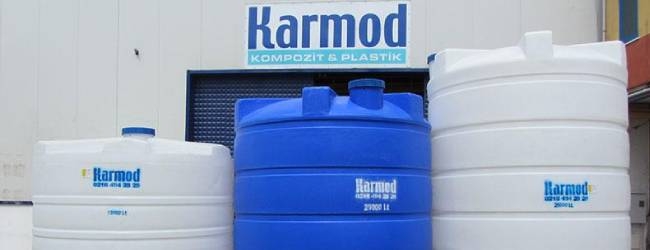
These tanks have become quite popular in recent years due to the many advantages they offer to users and their affordable prices. Looking at the general purposes of these tanks, they are tools that store one or more liquids or foods, which can be preserved inside these tanks and then discharged when needed. These tanks can be produced using three different types of raw materials: polyethylene, polyester, and finally, stainless steel sheet.
In the scope of general use, these tanks are often made of polyethylene, a material commonly referred to as plastic in everyday language. Karmod Plastic has been producing these tanks using the latest technology production systems and its experience dating back to 1986. The choice of color for these tanks can be important in some cases. For example, some chemical substances can emit heat. Different colored tanks can be preferred for the storage of such substances so that people or workers are careful when approaching them.
Transporting these tanks is quite easy due to their designs. Some brands are capable of transporting raw materials in these tanks. Another example in this regard is the transportation of hazardous or flammable materials. Therefore, having various color options when categorizing these tanks is important. It's also recommended to place labels for warnings on these tanks if you are storing and transporting a hazardous material.
Another aspect where these colors matter is for brands that want to store multiple contents. By choosing different colors for all their contents, they can categorize them. Although these tanks are generally produced in blue and white color options due to production standards, we can manufacture plastic tanks in any color palette according to our customers' requests.
What You Should Know About the Raw Material of Plastic Water Tanks
These tanks can be used in nearly every area of our lives. For individual use, they can be placed anywhere in the house, while in corporate use, they are used for transporting raw materials or storing liquids coming off production lines. They can also be used in rainwater harvesting systems.
One feature that sets these tanks apart from others is their various designs. These designs include vertical, horizontal, rectangular, millennium, new generation, silo tanks, pickle, and brine tanks, and finally, underground tanks. The raw material used for these tanks is called Linear Low-Density Polyethylene in the field of chemistry. The use of polyethylene as a raw material is common because it is internationally recognized as suitable for food contact.
Due to its food compatibility, various food items can be stored in these tanks. Additionally, processes like bringing and storing fuel and diesel tanks can be carried out in these tanks. Another feature is the high resistance of this raw material to ultraviolet rays. As a result, harmful sunlight does not enter these tanks when made with polyethylene. Thus, no algae or mold formation is observed inside these tanks, creating a healthier environment for storing drinkable liquids and food.
Technical Specifications of Plastic Water Tanks
One of the most asked questions about these tanks is about the features they offer to the user. These polyethylene water tanks are in high demand. From a general usage perspective, one of the other aspects that users complain about is the potential for bad odors inside the tanks. This can often be due to manufacturers producing tanks under poor conditions. In our production facilities, we do not use recycled raw materials or any chemicals that could harm the tanks. As a result, the tanks we produce can be longer-lasting and more durable.
In terms of capacity, these tanks start from a minimum of 50 liters and can go up to 25,000 liters. These tanks can also be produced with special project designs if requested. To ensure food compatibility, we use stainless brass connections in all our products. Additionally, the lids of these tanks are also made of polyethylene to maximize their suitability for food. We are so confident in our products that all of them are guaranteed against manufacturing defects.
Cleaning Plastic Water Tanks
Another issue that can cause bad odors is neglecting to clean the tanks. When tanks are not cleaned, the residue left inside them can become the source of bad smells. These tanks are manufactured as monoblocks, i.e., in a single piece, in our state-of-the-art production facilities. This makes cleaning these tanks much easier. When cleaned regularly, there will be no odor formation, dirt, or algae inside the tank.
Another factor that makes cleaning easier is the throat design of the tanks. These designs are specifically made to facilitate cleaning. You can easily flush out dirt and liquid from the tank by filling it with pressurized water.
Can the Volumes of Plastic Water Tanks be Increased?
In terms of general use, another important issue to consider is whether the tank volume can be increased later. Increasing the volume of a tank is possible by connecting two or more tanks. Some users may want to connect these tanks according to their evolving needs. In this regard, it is possible to create connections between two or more tanks, enabling you to use them together.
In this article, we've covered almost everything you need to know about these tanks, going into detail. From now on, you can make a more informed choice regarding these tanks. If you still have any questions, you can consult with our customer representatives, who are experts in this field.


 EN
EN
 DE
DE
 FR
FR
 IT
IT
 ES
ES
 PT
PT
 RU
RU
 AR
AR
 BG
BG
 SR
SR
 GR
GR
 SQ
SQ
 RO
RO
 PL
PL
 HU
HU
 CZ
CZ
 HR
HR
 AZ
AZ
 GE
GE
 AM
AM
 IL
IL